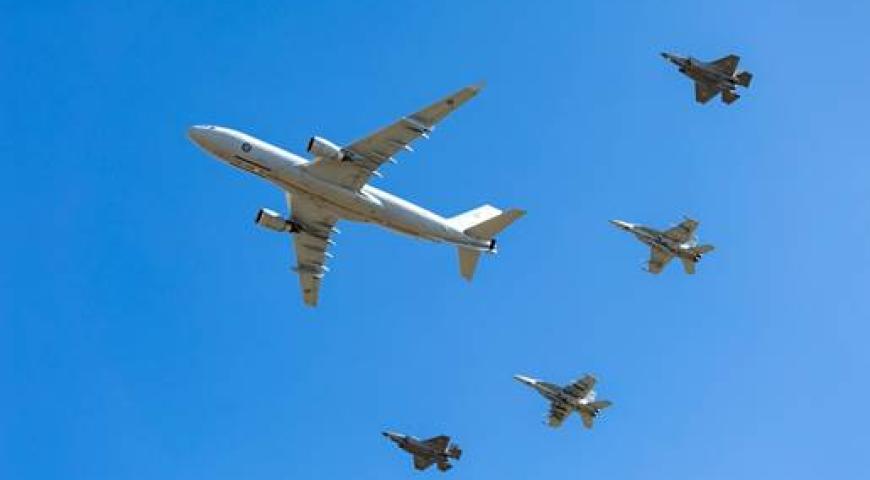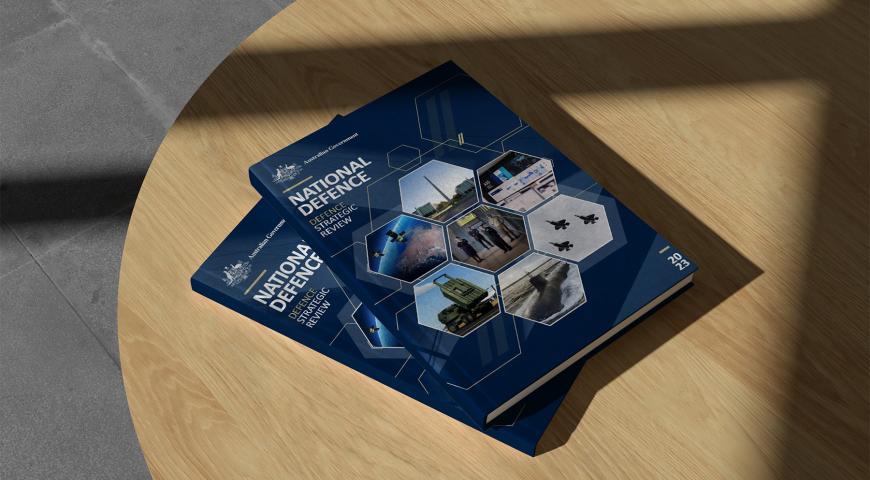Introduction
How do we train combatants for warfare? We have high-tech equipment, expensive training facilities, competitive selection models, instructors who have ‘lived’ experience and a long history of what has worked in the past. Even so, there has long been a view that combat will always shock the people who go there no matter what training they undergo. The requirement to kill other human beings, and to experience them trying to kill you, is inherently confronting. This may have informed a common view that people either had what it takes to be a combatant or they didn’t, making recruit training largely an extension of the selection process. However, rather than experiencing shame and humiliation, a soldier struggling to adjust to military service may achieve a better outcome if instructors knew there was training that could overcome their anxiety.
War is chaotic, stressful and dangerous but it isn’t entirely alone in this regard. Firefighters and police have long been training people to deal with catastrophic conditions, including a clear risk to life. There is a body of research, both military and civilian,[1][2][3][4][5] indicating people can be taught to overcome fear in life-threatening situations. Even so, most people readily admit these training methods struggle to replicate the psychological effects inherent in warfare. Which leaves the freshly minted combatant still vulnerable to a shock reaction the first time they experience killing.
The purpose of this paper is to discuss a new approach to combat training that imbeds the ‘shock of war’, eg, how an individual responds to killing and the threat of being killed, at its heart. ‘Point of Impact’ training addresses the neurological effects that naturally come with terror (a consequence of life-threatening fear). To be ethical the training cannot induce real terror, but by familiarising people with aspects of this fear in manageable degrees, it is possible to learn to resist the neurological consequences of panic. This is not the same as stress inoculation or attempting to not feel fear at all, it is about learning techniques to manage the fear response in intentionally fearful situations under controlled conditions.
Human Performance Optimisation
Increasingly, the management of the psychological effects of warfare are being addressed by the introduction of protective equipment. Studies indicate the integration of equipment that reduces the psychological impact of warfare, such as body armour, can also significantly degrade performance. For example, police body armour decreases mobility by between 13 to 42%, with further decreases noted if a short run is introduced.[6] How effective body armour is against weapons commonly used in war, eg explosive devices, is debateable, so arguably the main value of this equipment is it gives an appearance of safety resulting in a reduction in fear. Unfortunately, body armour makes the combatant less mobile and therefore potentially more vulnerable to attack, which is obviously counter-productive. If fear is the Achilles heel, what is needed is not body armour, it is training that reduces the psychological effects of combat.
Human Performance Optimisation (HPO) is the integration and application of professional skills, knowledge, and technology to improve combatant performance in an operational environment. It encompasses the life cycle of the combatant from pre-deployment training to injury management and rehabilitation.[7] HPO is a concept for capability preservation, where HPO initiatives improve performance across the domains of physiology and psychology. These are further broken down to physical performance, nutritional status, cognitive performance, environmental challenges, sleep, and pain management.[8] These are the friction elements combatants, or others in dangerous roles, are operationally exposed to and any degradation in these factors can result in a degradation in performance.
In 2017, the Australian Army 7th Brigade (7 Bde) implemented a force resilience program based on HPO principles, in line with the commander’s intent to enhance force resilience and operational preparedness. This project led to the formation of the Brigade Combat Behaviours Centre (CBC), focusing on enhancing individual combat skill such as combat shooting, the Army Combative Program (ACP), and Tactical Combat Casualty Care (TCCC), all underpinned by ethical decision making.[9] Central to the ACP is Point of Impact training. Wider efforts across the Army focused on the ‘Tactical Athlete’ emphasising physical performance and injury management.4
Point of Impact Training
The point of impact approach is based on close quarter combat prioritising hand-to-hand use of force. A 2014 US Army study found that 72.6% of combative encounters involved grappling, 21.9% used weapons and 5.5% involved striking, mainly elbows and knees. The same survey found around 19.0% of soldiers reported using hand-to-hand combat skills during operational deployment to Iraq.[10] Combatants require both lethal and non-lethal decision and application options. The hand-to-hand use of force is a combative technique providing a manageable stimulus for real-time stress, therefore it is a potentially valuable analogue for combat. There are several combative programs in both the military and the police, as well as the private sector.
Fig 1 A and B. Combat Mindset Framework Stress Regulation.
By definition, point of impact training links to the autonomic nervous system which is responsible for the regulation of bodily processes including respiratory rate, heart rate and blood pressure. The main aim of leveraging the combat mindset framework and autonomic nervous system responses is to improve reactivity under combat stimulus conditions, thereby limiting the effects of an overwhelming sympathetic response (eg panic). This acts as a form of mindful practice[11] with reciprocal control of mental awareness as per Fig 1 A. Point of impact training enables the trainee to maintain higher executive function (eg, decision making, moral reasoning, and complex motor skill ability) while being exposed to increasingly intense levels of threat. In line with these concepts, training is conducted using an integrated skills approach, which includes:
Base Line Training ACP: This training provides the combatant both initial introduction to the combative close quarter combat environment and an individual development path that offers wider certification of skills. See the ACP doctrine note[12][13], ADF Martial Arts Association participation in relevant martial arts sports competition with an emphasis on ACP combat advantage techniques.[14]
Low Fidelity Simulation: This allows combatants to build a variety of foundation skills that establish good combat behaviour habits through developing unconscious competence. Low fidelity simulation reality-based training includes integration of full reflex training in all combat behaviours under supervision of expert level trainers. This training stops short of real-life experience with no exposure to pyrotechnics or munitions. It is predominantly drill-based training. This training is suitable for ACP courses, unit continuation training, and operational readiness exercises.
High Fidelity Simulation (HFS). This incorporates live simulation of ‘real world’ scenarios that include a higher level of training across individual and collective skills. This level of training places considerably more mental strain on participants and allows for fewer mistakes. Incorporation of Reality Based Training (RBT) Blank/Man Marking Munitions, Pyrotechnics, Smell and Battle Noise Simulation provides a high level of realism yielding outcomes that would be experienced in actual operations. Stress response metrics and real time performance data capture is possible under this level of fidelity. This training is suitable for enhanced unit continuation training, and operational readiness exercises.
Point of impact also leverages martial arts training methodologies which incorporate a progression system, integrated values, and ethics training, as well as habituation training.[15] This improves adaptive behaviours to the combat stress response, thereby improving mental readiness. Screening and assessment activities are a combination of:
Reality-Based Training (RBT). RBT is a concept that provides simulation replicating the various situations combatants may encounter in the ‘real world’. It is used to conduct controlled, objective-based training. The training, through design, incorporates elements of time, internalised fear of failure, felt response, induced stressors, and the pressures of sensory overload.[16] These pressures are designed to replicate the body’s autonomic and physiological effects during combat.
Stress Exposure Training (SET) Model. The SET is a suggested mode of application of RBT. SET is a multistage approach to improving adaptive behaviours to stressful events, thereby improving stress response awareness and developing cognitive, emotional, and behavioural control strategies. This is achieved through RBT, coaching, and debriefing of combatant performance.[17] It is also achieved at a lower level through combat related sports competition.
Reflex Training. Reflex training is unique practices and methods of physical and technical training which include simulated exposure, otherwise known as sparring. It is proven that sparring improves the participant’s chance of success in a real confrontation. The risk management of this training suggests it works best in competitive micro-cycles to improve the psychological, technical, and tactical elements, and whilst minimising the risk of injury.[18]
All domains of point of impact performance have aspects in common with other forms of physical activity and exercise. From a combat mindset perspective, the main commonality is the value placed on the application of knowledge and self-control whilst performing a technique or skill that includes ethical and philosophical qualities. Therefore, point of impact has characteristics that enable and help to promote psychosocial changes as well as physiological and psychological adaptions. Fig 1 B provides a visual representation of the reciprocal activity between point of impact and mindfulness as a form of stress control.11 In comparison to the wider combat mindset framework, the ability to control stress may enhance the combatant’s decision making, which may lead to corresponding increased survivability.
Conclusion
The combat mindset framework is at the core of defining point of impact training as well as remediating point of impact performance. Being able to respond appropriately to fear allows for the application of proportionate force escalation. Training designed to deal with the management of stress under fearful conditions has always been an important component of military preparation. Point of impact training philosophy and immersive training methodology take this a step further. This type of immersive training, based on current theories and science of human stress responses, motivations, and performance theories, makes control of arousal the key to high performance for combatants. Point of impact training is designed to limit disruption to awareness levels, thereby enabling higher levels of executive function in high pressure situations. It is now widely accepted that emotional regulation, mental conditioning, stress management and a survival mindset are all features of high performance in extreme stress environments, especially warfare.
This establishes a justification for setting up a monitoring framework that seeks to grade human performance by integrating these theories against the needs of the combatant. High fidelity reality-based training provides consequences linked to the trainee’s own hierarchy of needs and establishes the friction forces necessary to challenge motivation in problem solving. This data enables the participant to benchmark their performance, thereby identifying areas for remediation and monitoring progress in line with combat mindset performance pillars. The trainee receives immediate feedback on performance and this can be aided by video-based capture analysis.
In the past, behaviours and habits that did not reflect the rational governance of the prefrontal cortex (which were often associated with feelings of shame and humiliation) were likely to be hidden rather than remediated, leaving the individual vulnerable to a negative reaction in actual combat. To reverse this situation, the 7 Bde Army Combative Program has sought to make tactical behaviour development and validation stimuli a central focus for training. In this way, every individual enhances the skills necessary to apply appropriate real-time military responses and ethical decision making under pressure.
1 McCullough, P; La Reau, A; Gomez, G & Coffey, C. (2019). Human Performance for Tactical Athletes: The science based Eat Sweat Thrive methodology from O2X Human Performance. Fire Engineering Books and Videos. p.1-320
2 Kelly, TK; Masi, R; Walker, B; Knapp, S & Leuschner, KJ. (2013). An Assessment of the Army's Tactical Human Optimization, Rapid Rehabilitation and Reconditioning Program. Rand Health Quarterly, 3(2), 8.
3 Kelly, TK; Masi, R; Walker, B; Knapp, S & Leuschner, KJ. (2013). An Assessment of the Army's Tactical Human Optimization, Rapid Rehabilitation and Reconditioning Program. Rand Health Quarterly, 3(2), 8
4 Sonsee, G. (2019). Human Performance Optimisation in the Army. The Cove. Human Performance Optimisation in the Army | The Cove
5 Dempsey, P; Handcock, P & Rehrer, N. (2013). Impact of police body armour and equipment on mobility. Appl Ergon. 44(6):957-61. doi:10.1016/j.apergo.2013.02.011
6 Terrill, W; Zimmerman, L & Somers, LJ. (2023). Applying Video-Based Systematic Social Observation to Police Use of Force Encounters: An Assessment of De-Escalation and Escalation within the Context of Proportionality and Incrementalism. Justice Quarterly, ahead-of-print (ahead-of-print), 1–30. https://doi.org/10.1080/07418825.2023.2222819
7 Deuster, P & O’Conner, F. (2015). Human Performance Optimisation: Culture Change and Paradigm Shift. Journal of Strength and Conditioning Research. 29(11S)/S52-S56
8 Nindl, B; Jaffin, D; Dretsch, M; Cheuvront, S; Wesensten, N; Kent, M; Grunberg N; Pierce, J; Barry, E; Scott, J; Young, A; O’Conner, F; Deuster, P (2015) Human Performance Optimization Metrics: Consensus Findings, Gaps, and Recommendations for Future Research.
9 7 CBT BDE. (2020). Brief for Commander 7th Combat Brigade: The 7th Combat Brigade Combative Centre Project. 7CBCC/OUT/BRIEF001/20
10 Jensen, P (2014) Hand to Hand Combat and the Use of Combative Skills: An Analysis of the United States Army Post Combat Surveys from 2004 – 2008
11 Naves-Bittencourt, W; Mendonca-de-Sousa, A; Stults-Kolmainen, M; Fontes, E; Cordova, C; Demarzo, M & Boullosa, D (2015) Martial Arts: Mindful Exercise to Combat Stress. European Journal of Human Movement. 34 p 45
12 DN 14-21. (2021). Army Combative. Australian Army. Commonwealth of Australia. P. 1-140
13 Kinetic Fighting Pty Ltd. (2018). Armies Combatives Program. Force Preparation ISET Training. Commonwealth of Australia Contract Services.
14 Lavers-McBain, G & Johnston, A. (2018). Australian Army: Army Combative Tournament. Black Dragon Kai Combat Systems. p. 1-66
15 Childs, G. (2014). Developing Resilience Through the Modern Army Combatives Program. United States Army. School of Advanced Military Studies. United States Army Command and General Staff College Fort Leavenworth, Kansas. ADA611747.pdf (dtic.mil)
16 Remsberg, C. (2018). Putting The “Real” In Reality Based Training: A “Scientific Approach” To Scenarios. Force Science Institute. Putting The “Real” In Reality Training: A “Scientific Approach” To Scenarios - Force Science
17 Thompson, M & McCreary, D (2006) Enhancing Mental Readiness in Military Personnel. In Human Dimensions in Military Operations – Military leaders’ Strategies for Addressing Stress and Psychological Support. Defence Research & Development Canada. pp 4-4 to 4-7
18 Thompson, M & McCreary, D (2006) Enhancing Mental Readiness in Military Personnel. In Human Dimensions in Military Operations – Military leaders’ Strategies for Addressing Stress and Psychological Support. Defence Research & Development Canada. pp 4-4 to 4-7
Defence Mastery
Please let us know if you have discovered an issue with the content on this page.
Comments
Start the conversation by sharing your thoughts! Please login to comment. If you don't yet have an account registration is quick and easy.




